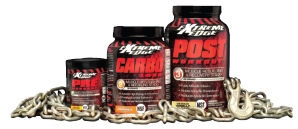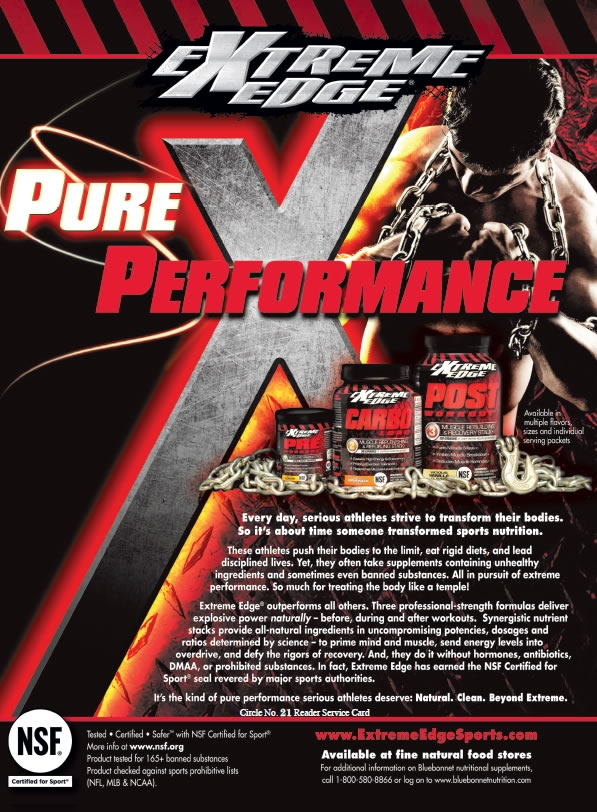Q: How has the face of the sports nutrition market changed in recent years?
A: Now a $3.2-bilion industry projected to grow 21% between 2008 and 2013, sports nutrition products are no longer just a niche category used by elite athletes, such as pro athletes and hardcore bodybuilders to augment their rigorous training and give them a competitive advantage. General consumers who lead active lifestyles have now sought out sports nutrition supplements to improve their physical look, energy and performance as part of a pathway to leading a healthier lifestyle. Moreover, their brand selections in this category are highly influenced by the endorsements of serious athletes and bodybuilders whom they aspire to emulate.
Q: How have some brands met the challenges associated with sports nutrition industry?
A: With this gain in popularity and awareness among general consumers, it has become increasingly clear that not all sports nutrition products are created equal. Since 2007, the U.S. Food and Drug Administration (FDA) has identified more than 300 illegal products marketed as “dietary supplements” or “sports nutrition” that contain hidden drugs, stimulants or other undeclared substances. Because of this, there has been an increase in the regulatory enforcement by FDA on sports nutrition products in recent years. In addition, the U.S. Anti-Doping Agency (USADA) launched the Supplement Safety Now initiative to work with industry leaders to provide consumers with clean, safe products.
Bluebonnet Nutrition stepped up to that challenge by launching one of the cleanest, most effective sports nutrition lines to hit the market: Extreme Edge®. This line has been tested and proven to contain no banned substances or harmful ingredients, earning the NSF Certified for Sport® seal revered by major sports authorities (e.g., NFL, MLB, etc.). No longer do hardcore bodybuilders, serious athletes and general active lifestyle enthusiasts have to sacrifice purity for efficacy or worry about the chance of getting disqualified or stripped of their opportunity to compete.

Q: What kind of nutrients should consumers look for in pre-workout formulas and why?
A: Simple carbohydrates that are fast-acting in conjunction with amino acids (i.e., typically 3 to 6 g) with a focus on arginine, lysine and branched-chain amino acids (BCAAs), plus responsible amounts of caffeine spur the body into action—not just physically, but mentally. Effective pre-workout formulas like Extreme Edge® Pre Workout should help to prepare the body for the rigors of a workout. All of the ingredients listed previously will help ignite explosive energy and sharpen mental focus in addition to CarnoSyn®, the patented and most-studied form of beta-alanine, which also helps to increase the concentration of carnosine in the muscles, preparing them for extreme performance while decreasing fatigue.
Q: What about carbohydrate loading? When  and how should athletes go about this?
and how should athletes go about this?
A: Carbohydrate formulas can be used to fuel the athlete during training sessions that last longer than an hour and can help refuel the glycogen stores of the liver and muscles two days prior to a marathon or triathlon event. Currently, the recommendation is 20–60 g of complex carbohydrates per hour in a 6–8% solution to help push the body through a vigorous workout. An endurance formula like Extreme Edge® Carbo Load with complex carbohydrates (i.e., waxy maze, steel cut oats, brown rice and maltodextrin) is important. When you are refueling the body, you want carbohydrate sources that don’t just temporarily spike blood glucose levels but rather are steady and provide the cells with ample energy so athletes can go the distance. Also look for carbohydrate formulas like Extreme Edge® Carbo Load that contain nutrients, such as alpha lipoic acid, cinnamon (Cinnulin PF) and chromium, that support glucose and insulin activity so that athletes can avoid the dreaded blood-sugar nosedive.
Q. What are the current macronutrient recommendations for post-training?
A: Depending on the sport (i.e., resistance vs. endurance), nutritional recommendations can vary. Many athletes like a 3:1 protein/carbohydrate blend similar to that which is found in Extreme Edge® Post Workout to help support the body during recovery and promote muscle growth. The reason behind this is because the body has a “window of opportunity” to transition from a catabolic to an anabolic state where muscle can be rebuilt and recover properly. This 3:1 ratio allows the athlete to hit the gym the next day with even more intensity than the day before. Effective post-workout formulas should provide at least 150 calories that is comprised of a high-quality, fast-acting protein like whey protein isolate and complex carbohydrates like waxy maize. It should also contain ingredients that support the body in recovery like bromelain from pineapple, glutamine and additional BCAAs in a 4:1:1 ratio to optimize muscle repair. Plus, like Extreme Edge® Post Workout, each serving should provide naturally occurring minerals such as calcium, magnesium, sodium, phosphate and potassium to help replenish electrolytes, which are lost through sweat to help reduce the risk of cramping and dehydration.
References
Heller, L. (2010, June 3). Sports nutrition market driven by non-sporty consumers. Nutraingredients. Retrieved on December 10, 2010 from http://www.nutraingredients.com/Consumer-Trends/Sports-nutrition-market-driven-by-non-sporty-consumers.
Lambert, C. P., Frank, L. L., & Evans, W. J. (2004). Macronutrient considerations for the sport of bodybuilding. Sports Medicine, 34(5), 317-327.
World Anti-Doping Code (2nd ed.). (2009). Montreal, Quebec: World Anti- Doping Agency.
Doping Agency.
Trisha Sugarek MacDonald holds a Master’s of Science in Nutrition from Texas Woman’s University and also a Bachelor’s of Science Degree in Nutrition and Foods from Texas State University. Mrs. MacDonald is currently the Director of Research & Development as well as the National Educator at Bluebonnet Nutrition where she investigates new ingredients, directs the launch of new products, and provides industry training on numerous subjects as it relates to the connection between nutrition and health. She is a frequent editorial contributor and lecturer on the benefits surrounding the responsible use of supplements.

Published in WholeFoods Magazine, August 2012










